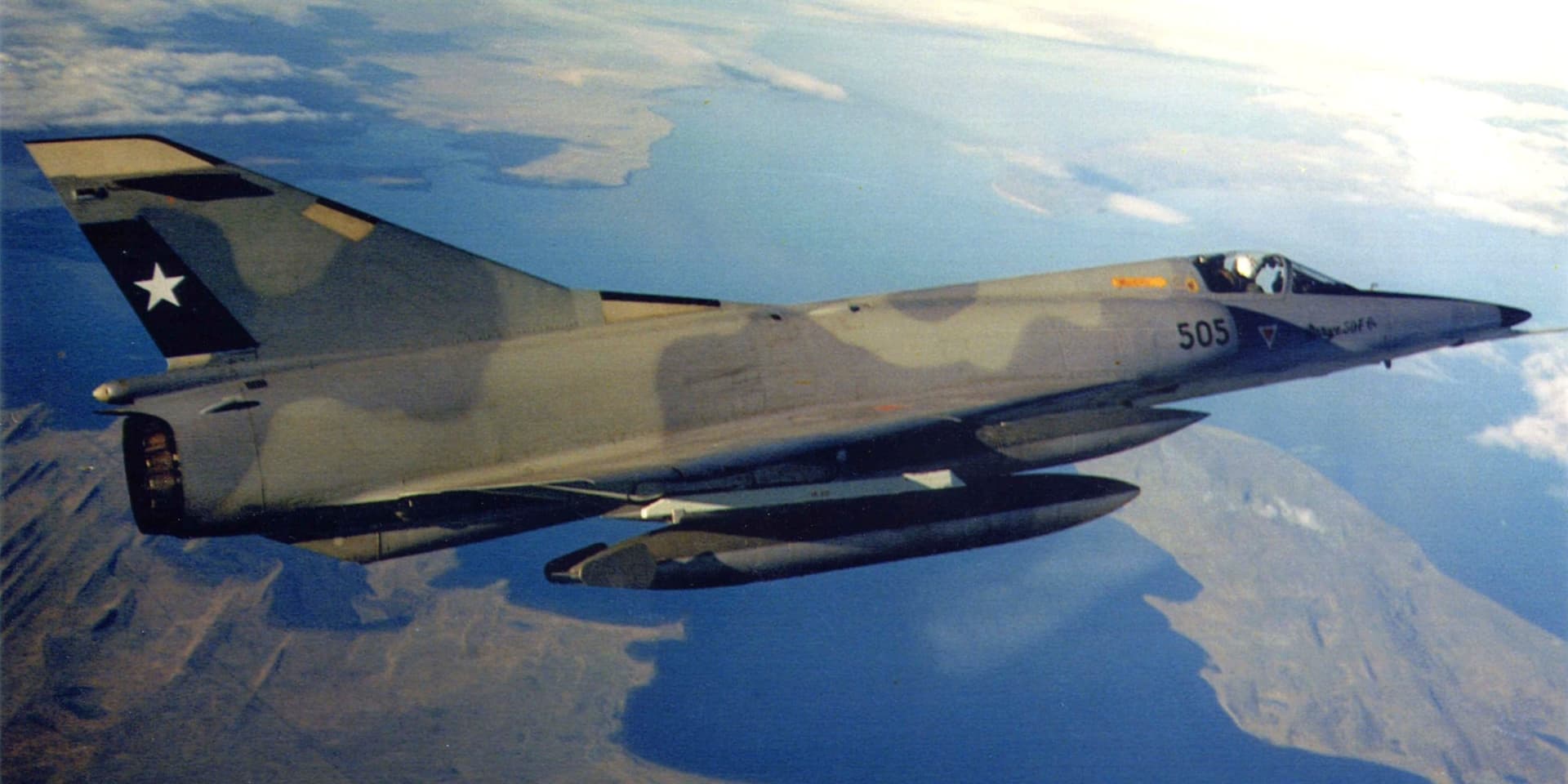- Yes
- No
Mirage 50FC
History:
The Mirage 50 is the successor to the well-known Mirage 5 but was not its replacement. This aircraft had the more powerful and better performing Snecma Atar 9K-50 engine than the Atar 9C, the Mirage 50 owes its name to this more powerful engine. Only a total of 24 units were produced or modified, with Chile and Venezuela being the only customers. Chile was the first customer to buy this new model with a total of 16 aircraft in different versions (50C, 50FC, 50DC) but we will only focus on the Mirage 50FC (French-Chilean) variant.
Due to tensions with Argentina Chile decided to incorporate new fighters in response to the new Argentine Dagger fighters purchased from Israel, so in 1980 Chile received 8 Mirage 50FC (Chilean French) receiving the serials 500 to 507, later, at the end of 1981, the Mirage 50FC 500 series would be re-registered as 508. Although the history of these fighters begins much earlier, linking them with Israel, since originally these fighters were Mirage 5J that had been ordered by Israel in 1966, but due to the outbreak of the conflict in the Middle East, France would end up embargoing them and in this way Israel would create its own variant, the Nesher. The Mirage 5Js were stockpiled and in 1973 they were put into service in the French Air Force by powering them with the Atar 9C-7 engine and renamed Mirage 5F, then France would repower them with the new Atar 9K-50 engine and sell them to Chile as Mirage 50FC.

It is also important to mention that the Chilean Mirage 50FC specialized in ground attack, as they featured a ground-attack telemetric radar shared with the original Mirage 5F, providing precise attack capability using bombs and rockets. The Mirage 50FC also featured the classic Mirage Detecteur RWR, easily recognizable by the antenna on the tail of the aircraft.

As mentioned before, the new Mirage 50 carried the more powerful Atar 9K-50 engine that provided 5000 kg of normal thrust and 7200 kg of thrust with the afterburner being well above the 4300 kg and 6200 kg of thrust respectively provided by the Atar 9C this being the main improvement from the Mirage 50 to the Mirage 5, other technical improvements to the Mirage 50 were 15% to 20% improvement in take-off run, an additional 1,900 pounds of take-off weight (approximately 900 kg), an additional 140 km of range and a 35% improvement in mount time.

Regarding weapons, the original contract with France did not budget for the purchase of weapons, so the Chilean Mirages 50 were armed with national bombs manufactured by Cardoen Industries, which included general purpose bombs and devastating cluster bombs, cluster bombs manufactured by Ferrimar were also available, but the FACH’s favorites were those manufactured by Cardoen since they were more reliable and better constructed. As for air-to-air missiles, reliance was once again placed on the Israeli Shafrir II missile which had been integrated into the FACH inventory in 1977. Additional tanks were also integrated into different models (RP30, RP6-III, RP18 R, RPK -17). For ground attack, the RPK-17 supplementary tanks capable of carrying 4 free fall bombs, whether general purpose bombs or Cardoen cluster bombs, were used. At the rocket level, the 68 mm SNEB rockets that were already in the FACH stock continued to be used.


Aesthetically, the Mirage 50FC was virtually identical to the French Mirage 5F, although the cockpit featured some differences. Chilean national emblems were also included in the paintwork, such as the star on the tail of the aircraft and the FACH shield on the wings. You can also see the Mirage 50FC painted near the nose, representing the aircraft model. There aren’t many photos of the Mirage 50FC cockpit, but I’m sharing one with you in this suggestion. Its paint scheme was later modified to match that of the Mirage 50C, which featured a blue-gray color scheme from the factory.
Finally the Mirage 50FC along with the other versions of the Mirage 50 would be put under the Chilean modernization program called Pantera and renamed Mirage 50CN Pantera, but that is another story.
Specifications:
- Crew:
- 1
- Armament:
- Primary: 2x 30mm DEFA 552A internal cannons
- Secondary: hardpoint mountings 7 support 4,000 kg:
- Bombs: Cardoen GP Bombs (Mk 81, 82, 83, 84), Cardoen Cluster Bombs (CB-130, CB-500, CB-250-K, CB-500-K), Ferrimar cluster bombs (WB-250-F, WB-500-F), Snake-eye bombs, Fuel tanks
- Rockets: 68mm SNEB rocket pods
- Missiles: 2x Shafrir 2
- Additional systems: Telemetric Radar, RWR (Radar warning receiver)
- Dimensions:
- Lenght: 15.5 m
- Wingspan: 8.22 m
- Height: 4.50 m
- Empty weight: 7,150 kg
- Weight maximum take-off: 13,700 kg
- Performance:
- Powerplant: Atar 9K-50 that provides 5,000 kg Normal thrust, 7,200 kg. thrust at full power
- Maximum speed: 2350 km/h
- Service Ceiling: 18000 m
- Range: 4000 km
- Rate of climb: 186 m/s
Chilean bombs specifications
CARDOEN GP BOMBS (general purpose)

CARDOEN CLUSTER BOMBS



Ferrimar CLUSTER BOMBS

Photos:



Sources:
- Amazon.com
- Amazon.com
- El Mirage 50 Pantera en la Fuerza Aérea de Chile
- 10 años del último vuelo oficial del Mirage Pantera de la Fuerza Aérea de Chile
- Chile, Industrias Cardoen, Uso Militar y Civil | PDF | Hogar y jardín | Historia
- Janes Air-Launched Weapons 1997
- Jane’s All the World’s Aircraft 1987-88
- Latin american mirages by Santiago Rivas and Juan Carlos Cicalesi












